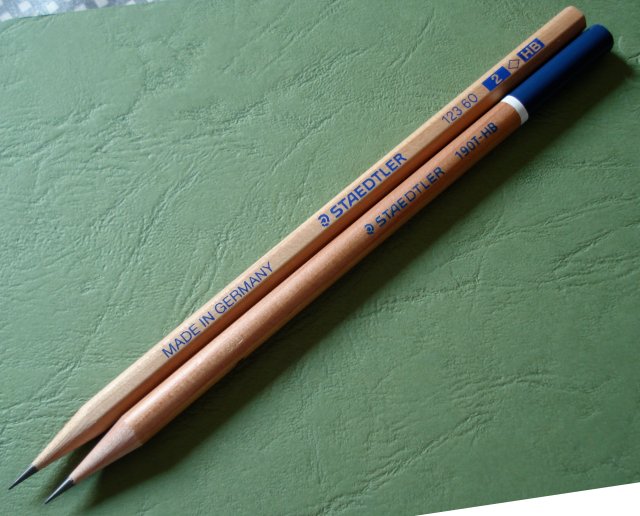
From Staedtler, we have two natural finish pencils. Not displayed on any Staedtler website I am aware of, they may be regional offerings, or are perhaps new to the market.
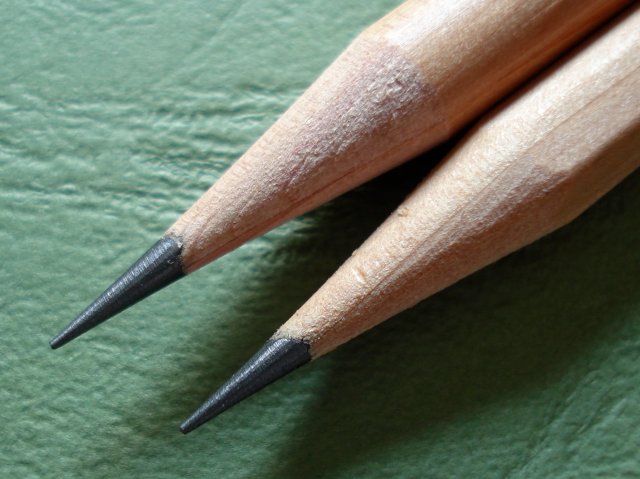
The 123 60 is an unlacquered hexagonal pencil, factory sharpened, with an unfinished end. The pencils and the box are both marked, “Made in Germany”. The English text on the box says, “Natural wood office pencils.”
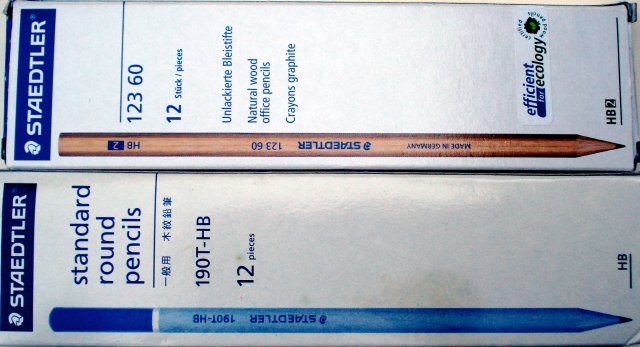
The 190T is a clear lacquered round pencil, unsharpened, with a dark blue cap and white cap ring. Apart from being a brand name round pencil, which is already a small category, it has a some curious elements.
First, the name appears to be foil stamped – another unusual practice for Staedtler. The box calls the 190T “standard round pencils” and is marked “Made in Thailand.”
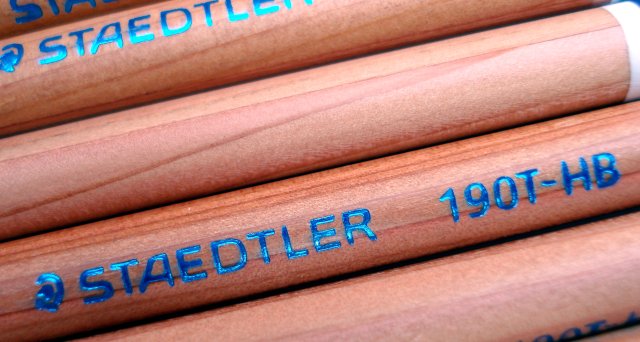
The box has an even more unusual claim – a bullet point stating, “crowned end to protect lead from humidity.” Now that is interesting – are leads vulnerable to the effects of humidity? Certainly at the point of contact with paper they are, and many have noted the relationship between humidity and a pencil’s performance. But at rest, unused – does the pencil’s core benefit from coverage at one end? I would guess that the wood is more vulnerable to the effects of humidity than the lead. What do you think of this claim?
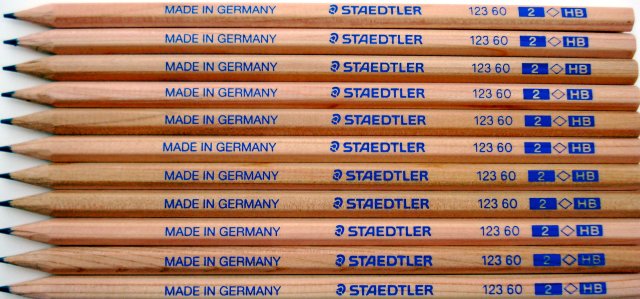
As writers, I’ve consistently found the 190T to be the better of the two, with a lead I would call smoother and darker. In appearance, I’d also give the nod to the 190T, and bonus points for the round shape.
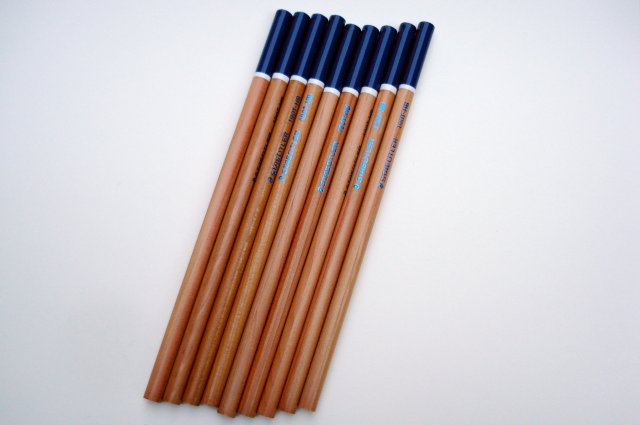
Perhaps responses to environmental trends, they are both nice and worth a try, especially the 190T.

I notice that the Made in Germany 123 60 hex model is packaged with Staedtler’s new “Efficient Ecology” ecolabel. This is a internal regime they are working towards to only use third party certified wood in all thier pencils and to address other ecological factors in thier production. As there are a growing variety of different competing wood certification programs around the world (FSC, SFI< PEFC, etc.) they are using this new label of their own design and trademark as an all-inclusive umbrella mark on thier products that conform to the set of ecological policies they have established as an internal standard. At this point I am not certain of the details of the other non-related eco standards they are adopting.
I do not understand that claim, I understand that the wooden prism or cylinder could be affected by humidity but I can’t figure how the lead can be affected into the wood.
The natural wood color is great with that beautiful grain on both of them, but I prefer the 190T because It’s round, I find them more comfortable, finally I’ll be alert if I can catch some one.
Thank you for the review of these two pencils – I haven’t seen them before.
Re the claim: Maybe the lacquer should protect the lead from saliva of those who put their pencils’ end in their mouth (but that’s just a guess).
I find the unusual design of the 190T very appealing! May I ask where you have purchased them?
I’ve seen the 123 60, Gunther, in Berlin at places like Kaufhof and KaDeWe. It is an ok pencil, but only just. The beautiful 190T, however, I have never found. Perhaps it is strictly for Asian distribution.
Woodchuck, thank you for the information.
Futural, thank you for the comment – the 190T does indeed display a nice woodgrain.
Gunther, Adair, thank you for the comments. The 190T was purchased from a random eBay seller, so that doesn’t tell us too much about the source. But, the box does give the name of Staedtler’s Hong Kong branch, so it could be for the Hong Kong market.
The name as well is curious. “standard round pencils” does not properly convey the charms of these pencils.
Thanks for showing those – they’re both beautiful, but the 190T looks spot-on! I’ll have to see if I can find some myself, as I am after some round Staedtler pencils too – the only one I was aware of before was the rare-as-hens’-teeth Stenofix.
I’m glad I stopped by to see these. Although pencils are not m writing implement of choice, these just look REALLY nice. I almost want to buy a bunch just to leave on my desk because they will look so nice sitting there. Great write up and as usual great photos.
Thanks for reviewing these pencils – do you know of a good distributor in Australia? Nothing beats a good natural finish.
Humidity does affect the performance of pencils. The leads are initially produced with water content and must be kiln dried. The clay which is mixed with the graphite is fairly pourous, and water content changes the darkness of the pencil line. A pencil that has been wetted produces a strange feel and in inconsistent line. Natural wood is prone to absorbtion, lacking a painted surface. A painted end is a good seal and a nice classy touch.
At the same time, I do prefer an eraser since human beings are prone to mistakes. Though it does not have a natural finish, I return to the Papermate Mirado Black Warrior (round), or Mirado classic (hex) as the smoothest pencil readily available with a good price.
But the 190T is a Mercedes.
Another natural finish Staedtler is the model 130 60N which I presume is a Staedtler Minerva (model 130 60) in “natural” form.
Unfortunately the 190T were discontinued during 2011 according to Staedtler Hong Kong.
They were certainly available In Hong Kong before this.